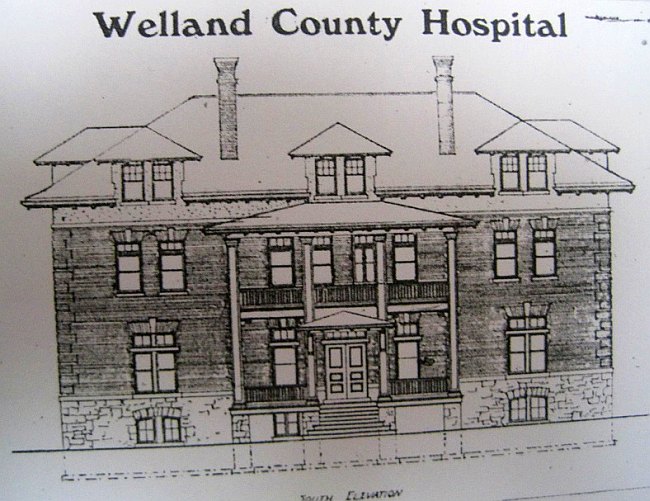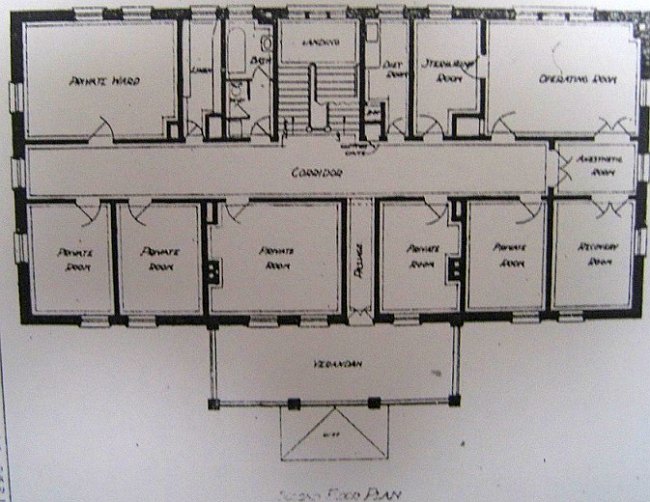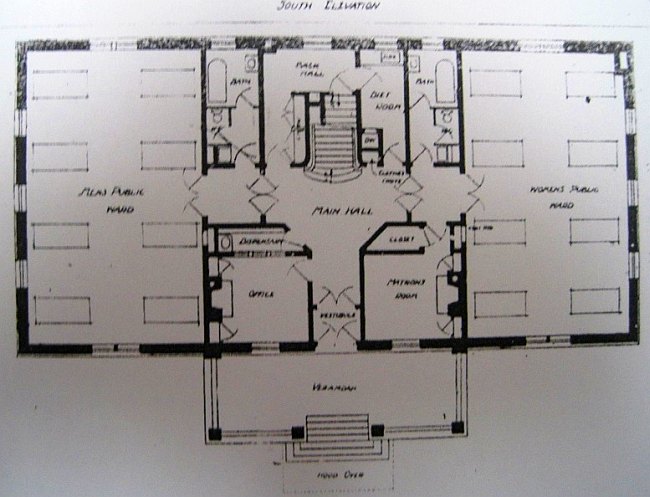The Stork, the Pale Rider and Cupid-What They Have Done
[Welland Tribune, 3 January 1908]
Cupid is a bit slow in Welland. The little fellow, who laughs at locksmiths and deals in hearts, has not averaged a marriage a week in our town, there only being 31 marriages during the past year. But the stork has done better, and from out its long beak, and out from the land of somewhere, out from mystery, has brought 53 little cherubs, who someday will be voters or mothers in the land. Death is ever busy, and 54 has the pale rider come to the town and 54 times has the crepe been hung above the door a Welland home. In plain language, Welland during the last twelve months has had 53births, 54 deaths and 31 marriages.
[Welland Tribune, 7 January 1908]
Mr. and Mrs. H.B. Sidey are now comfortably settled in their new home on Dorothy Street.
The Stork, the Pale Rider and Cupid-What They Have Done
[Welland Tribune, 3 January 1908]
Cupid is a bit slow in Welland. The little fellow, who laughs at locksmiths and deals in hearts, has not averaged a marriage a week in our town, there only being 31 marriages during the past year. But the stork has done better, and from out its long beak, and out from the land of somewhere, out from mystery, has brought 53 little cherubs, who someday will be voters or mothers in the land. Death is ever busy, and 54 has the pale rider come to the town and 54 times has the crepe been hung above the door a Welland home. In plain language, Welland during the last twelve months has had 53births, 54 deaths and 31 marriages.
[Welland Tribune, 17 January 1908]
Mr. W.O. Howell, carpenter, of Thorold township, near Fonthill, met with a very serious accident on Tuesday last. He was working for Charles McClellan on a building at Niagara Falls South, when a part of the framework fell, carrying Mr. Howell to the ground.
Mr. Howell’s escape from instant death was a mighty narrow one, a heavy timber crashing down but a few inches from his head. As it was, his left ankle was smashed, sustaining a compound fracture. He was removed to Dr. McGarry’s office, where the fracture was reduced by Drs. McGarry and Olmstead, and later he was removed to the hospital at the Falls, where he will be for the next five or six weeks. The accident is a most deplorable one.
Mr. Howell is a member of Court Raymond, Fonthill.
WELLAND GENERAL HOSPITAL
As Necessary as it will be Attractive.
[Welland Tribune, 17 January 1908]

Work will be commenced on the Welland General Hospital early in March, if the weather permits. The cuts accompanying the sketch are self-explanatory. The building, as it is well-known, will be built on the south side of the river bank, west of the rectory. Here, and amid the most pleasant surroundings, and aided by all that science and medical skill can discover or suggest, the injured will be treated, and the sick tenderly hurried to health again. The south elevation shows a very attractive exterior, rising from a stone basement. The first two storeys will be of red brick, above which will be stucco work. Spacious windows will give plenty of light, and the dimensions of the south elevation will be 40×86 feet.
The basement will contain the store and furnace rooms, the janitor’s room and the laundry. The kitchen closets. While for point of designated, the staff dining-room will also be in the basement, also pantries and also distinguishing it from the other floors, the word basement is used, yet it is not so according to the usual interpretation of the word. The place will be bright and airy, and practically be a ground floor, opening out on the terrace of the river bank. There will be ten rooms in the basement.
The first floor plan is attractive. The entrance to the hospital will be made through an airy verandah. A wide vestibule will lead to the office on the left, and that of the matron on the right. There will be two wards on this floor, the men’s ward to the left, and that of the women across the main hall, and opposite. Each public ward will accommodate eight beds. Baths, diet and lunch rooms, with lavatories, complete the arrangements.
The sick who are on easy street will take the second floor. Here are four private rooms and two semi-private wards. The semi-private wards will have room for two or three beds each. This flat will have a fine verandah. Besides the private rooms and wards, on this storey, will be the operating room, and the anesthetic room adjoining. This room is where the patient is sent to the realm of peace, before going into the spot where the nurses tread softly, and where the knives are sharp and the doctors are dressed in white. A recovery room adjoins the anesthetic room, where, in sound-proof walls the agonies returning, the patient can moan and cry without disturbing the other sick, for it is a dismal sound to hear one coming to from out the anesthetic. A sterilizing room adjoins the operating rooms. There are, of course, the usual closets, and bath rooms on this floor.

The third floor is given up on one end for the servants, who have two large dormitories. The nurses in the opposite end of the hall have a bath room, a large sitting-room and three bedrooms. There is also an isolation room on this floor, in case any contagious disease should creep in unheralded and undiagnosed.
The height of the building from basement to uppermost ceiling will be 11 feet. It will have a metal roof, will be electric lighted and heated by hot water.
The board is comprised of the following well-known gentlemen: W.E. Phin, President; A. Griffiths, 1st Vice President; G.C. Brown, treasurer; Dr. Colbeck, secretary; W.M. German, M.P., Co. Raymond, the Mayor in office; the Warden of the County, M. McAuliffe, Donald Sharpe, Dr. Howell, A.B. Huttell, Charles Henderson, Donald McGillivray, Dr. Garner and A.O. Beatty.

COAL GAS ACCIDENT
[Welland Tribune, 1 January 1908]
Elizabeth, widow of late Alex Philip, and mother of Mr. W.A. Philip of this place, died at her home on Claremont street last Wednesday, aged 80 years.
Mrs. Bernard Ball of Thorold, who has been in poor health for some time, was found hanging in her bedroom on Friday afternoon. Her husband died some time ago, and something over a year ago a brother of Mrs. Ball committed suicide.
Nearly smothered by Gas- A terrible fatality was narrowly averted here on Friday afternoon. Daniel Springer, employed at the Willson carbide factory, Merritton, put fresh coal on the fire and departed for work early in the morning, leaving the rest of the inmates asleep. In the house were Mrs. A.S. Ferguson, Springer’s sister; her grand-daughter, Norma Gadsby, and Mr. and Mrs. R.S. Ferguson of Buffalo, who are visiting at the house. None of the inmates woke till 11 o’clock, when the girl Norma was aroused, feeling very ill. She called her relatives, but got no response, and in a swooning condition she struggled to the street and attracted Chief Clark, who, with other citizens, went to the house and carried the unconscious inmates to a neighbor’s house, where they were with much difficulty restored to sensibility. An examination of the chimney showed that it was completely filled with soot, which had caused the escape of an immense quantity of coal gas in the house.
A brilliant wedding took place at Thorold on Wednesday afternoon, when Miss Augusta Campion Simson, youngest daughter of Mr. T.E. Simson, became the bride of Mr. George W. Northwood, architect, of Winnipeg. The ceremony was choral, and took place in St. John’s church in the presence of about fifty guests, Rev. F.C. Piper officiating. The bride was attended by her sister, Miss Gertrude Simson, as maid of honor, and by Miss Violet Lemon and Miss Winnifred Calcott as bridesmaids. The maid of honor and the bridesmaids instead of the customary bouquet, carried very large pink tulle muffs, something quite new in wedding party finery. Miss Weeks, organist of the church, played the wedding march as the wedding party entered and left the church, and all during the ceremony she played softly. The groom was supported by his brother, Mr. James Northwood of Winnipeg. Mr. and Mrs. Northwood left on wedding trip to Jamaica and the West Indies, and will be in Winnipeg, their future home, in five or six weeks.
Escort brought safely Into Port Dalhousie and now Lies in the Locks
-She is leaking but is Very Little Damaged.
(Special to The Telegraph)
[Welland Telegraph, 7 January 1908]
Port Colborne. Jan. 6- Everyone in town was delighted on Saturday to learn that DeW. Carter had at last been successful in his attempt to raise the tug Escort. The weather was very unfavorable all last week, but on Friday Lake Ontario was calm. At nine o’clock a.m., three tugs and the two large pontoon scows left Port Dalhousie for another attempt. After getting the cables and chains securely fastened, the tug was raised by the scows and the tugs began to tow her to port, which they finally reached at five o’clock Saturday morning. The Escort, which had been sunk for about six weeks, did not appear much damaged. Her smokestack and the roof of the pilot house were missing, but otherwise she appeared uninjured. On Saturday she was lifted above the surface by the gate lifters, but had to be let down again on account of an accident to the gate lifter. No bodies were found in the Escort. She was later raised again and pumped out, and will be at once towed to Port Colborne, where she will receive a through overhauling this winter. Capt. DeW. Carter was very fortunate indeed, in securing his lost tug, and only to his persistent efforts is his success due, which is always the case in this life. The man who sticks to it, all things being equal, usually succeeds in his endeavors or undertakings.
The tug Escort is in lock three. It is said the lock will be drained off, as she cannot be kept free from water, so the supposition is that she has a hole in her hull. Mr. Carter sent a lot of canvas down yesterday morning and other material to patch her up. The hope is expressed by everyone that the vent is only slight, and that is will be only a small job to fix it.
[Welland Telegraph, 7 January 1908]
We are pleased to introduce to Welland G.S. Moore, the newly appointed manager of the Royal Bank in Welland, and we feel we can do this best by reprinting a despatch to the Halifax Chronicle from Amherst, N.S.:-
Amherst, Dec. 30- The very many friends of G.S. Moore, manager of the Royal Bank of Canada here, will regret to hear that as soon as he is sufficiently recovered from a severe attack of peritonitis, from which he has been suffering, that he is to remove to Welland having been appointed to the management of the royal there.
During Mr. Moore’s stay in Amherst, something over two years, he has made many friends and has done much toward building up the large business of the bank numbering among his patrons some of the very best business and private accounts in Amherst. As a bank manager he has proved himself a man of exceptional ability, and business men generally will regret his leaving.
Mr. Moore and the family will also be greatly missed having mad many friends during their stay here. Welland, to which place, Mr. Moore goes, is one of the growing towns of Ontario, and like Amherst is a centre of industry, there being something over 3000 mechanics employed in the different industries. Being in the centre of the largest natural gas belt in the world, and only twelve miles from the largest electrical power plants in the world, the industrial advantages are exceptionally good, and while Amherst regrets the removal of Mr. Moore, they will wish him the same success in the new sphere as had attended him in Amherst. It is not known who will succeed Mr. Moore in the Royal Bank.
[Welland Telegraph, 7 January 1908]
The coal and lumber business on North Main Street, carried on by the late W.H. Crow for many years, has been purchased by Samuel Lambert of Thorold, formerly of Welland.
[Welland Telegraph, 7 January 1908]
The Welland Branch of the Bank of Nova Scotia opened its doors for business on Saturday morning. Visitors were very much pleased with the handsome offices of the bank. The work was designed by Arthur E. Nicholson of St. Catharines and the work was carried by the following men: Alterations, P.S. Peacock; masonry, Marcus Vanderburg; painting, Racher and Hyatt. The Canadian Office and School Company of Preston put in the fittings, which are of quartered oak, and very tasteful and handsome. There are two large vaults with safes made by the Gould & McCullough Company of Galt. The lighting is done by the Welland Electrical Company.
The manager of the Welland branch is P.A. Rowley of Fredericton, N.B., and the accountant, F.A. Bremmer of Charlottetown, P.E.I. Mr. Rowley will be joined in a week by Mrs. Rowley, and they will take up their residence on West Main Street in Mr. Vanderburg’s house, which is being altered and improved.
The Bank of Nova Scotia occupies a place singularly its own. Its stock is quoted today at 276, which is the highest quotation on Canadian Bank stock, and is 53 points higher than its nearer competitor. Expert auditors from Scotland, men who have no connection to any sense with the bank, make the audit each year. It is one of the four banks in Canada paying twelve per cent interest on stock. At present the bank has 85 branches of which _are in Ontario, but a number of other branches are to be opened in this province in the new year.
This is one matter in connection with the opening of the Welland branch that should not be overlooked. The bank believes in patronizing home industry, and spent all its money for local alterations with local men.
 Subscribe..
Subscribe..


